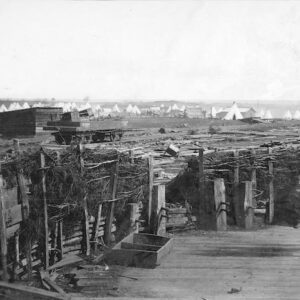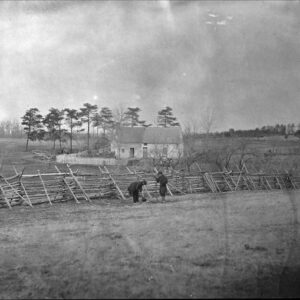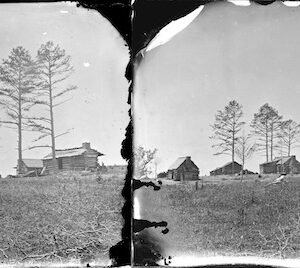Tag: Bull Run battlefield
Wikipedia says: The First Battle of Bull Run (the name used by Union forces), also known as the Battle of First Manassas (the name used by Confederate forces), was the first major battle of the American Civil War. The battle was fought on July 21, 1861, in Prince William County, Virginia, just north of the city of Manassas and about 30 miles west-southwest of Washington, D.C. The Union’s forces were slow in positioning themselves, allowing Confederate reinforcements time to arrive by rail. Each side had about 18,000 poorly trained and poorly led troops in their first battle. It was a Confederate victory, followed by a disorganized retreat of the Union forces.
Just months after the start of the war at Fort Sumter, the Northern public clamored for a march against the Confederate capital of Richmond, Virginia, which was expected to bring an early end to the Confederacy. Yielding to political pressure, Brig. Gen. Irvin McDowell led his unseasoned Union Army across Bull Run against the equally inexperienced Confederate Army of Brig. Gen. P. G. T. Beauregard camped near Manassas Junction. McDowell’s ambitious plan for a surprise flank attack on the Confederate left was poorly executed; nevertheless, the Confederates, who had been planning to attack the Union left flank, found themselves at an initial disadvantage.
Confederate reinforcements under Brig. Gen. Joseph E. Johnston arrived from the Shenandoah Valley by railroad, and the course of the battle quickly changed. A brigade of Virginians under the relatively unknown brigadier general from the Virginia Military Institute, Thomas J. Jackson, stood its ground, which resulted in Jackson receiving his famous nickname, “Stonewall”. The Confederates launched a strong counterattack, and as the Union troops began withdrawing under fire, many panicked and the retreat turned into a rout. McDowell’s men frantically ran without order in the direction of Washington, D.C.
Both armies were sobered by the fierce fighting and the many casualties and realized that the war was going to be much longer and bloodier than either had anticipated. The First Battle of Bull Run highlighted many of the problems and deficiencies that were typical of the first year of the war. Units were committed piecemeal, attacks were frontal, infantry failed to protect exposed artillery, tactical intelligence was minimal, and neither commander was able to employ his whole force effectively. McDowell, with 35,000 men, could commit only about 18,000, and the combined Confederate forces, with about 32,000 men, also committed 18,000.
The Second Battle of Bull Run or Battle of Second Manassas was fought August 29–30, 1862, in Prince William County, Virginia, as part of the American Civil War. It was the culmination of the Northern Virginia Campaign waged by Confederate Gen. Robert E. Lee’s Army of Northern Virginia against Union Maj. Gen. John Pope’s Army of Virginia, and a battle of much larger scale and numbers than the First Battle of Bull Run (or First Manassas) fought on July 21, 1861 on the same ground.
Following a wide-ranging flanking march, Confederate Maj. Gen. Thomas J. “Stonewall” Jackson captured the Union supply depot at Manassas Junction, threatening Pope’s line of communications with Washington, D.C. Withdrawing a few miles to the northwest, Jackson took up strong concealed defensive positions on Stony Ridge and awaited the arrival of the wing of Lee’s army commanded by Maj. Gen. James Longstreet. On August 28, 1862, Jackson attacked a Union column just east of Gainesville, at Brawner’s Farm, resulting in a stalemate but successfully getting Pope’s attention. On that same day, Longstreet broke through light Union resistance in the Battle of Thoroughfare Gap and approached the battlefield.
Pope became convinced that he had trapped Jackson and concentrated the bulk of his army against him. On August 29, Pope launched a series of assaults against Jackson’s position along an unfinished railroad grade. The attacks were repulsed with heavy casualties on both sides. At noon, Longstreet arrived on the field from Thoroughfare Gap and took position on Jackson’s right flank. On August 30, Pope renewed his attacks, seemingly unaware that Longstreet was on the field. When massed Confederate artillery devastated a Union assault by Maj. Gen. Fitz John Porter’s V Corps, Longstreet’s wing of 25,000 men in five divisions counterattacked in the largest simultaneous mass assault of the war. The Union left flank was crushed and the army was driven back to Bull Run. Only an effective Union rear guard action prevented a replay of the First Manassas defeat. Pope’s retreat to Centreville was nonetheless precipitous.
Success in this battle emboldened Lee to initiate the ensuing Maryland Campaign.
Showing 1–16 of 74 resultsSorted by latest
-

Image ID: AZMK
$2.99 -

Image ID: 1RIE
$5.99 -

Image ID: AZJB
-

Image ID: AYZG
$1.99 -

Image ID: AYVC
-

Image ID: AYNN
$0.99 -

Image ID: AJWP
$0.99 – $5.99 This product has multiple variants. The options may be chosen on the product page -

Image ID: APAS
$5.99 -

Image ID: AMER
$1.99 -

Image ID: APZR
$5.99 -

Image ID: AQAK
$6.99 -

Image ID: AQAZ
$6.99 -

Image ID: ARRX
$5.99 -

Image ID: ANOC
$5.99 -

Image ID: AMDU
$6.99 -

Image ID: AJSQ
$6.99